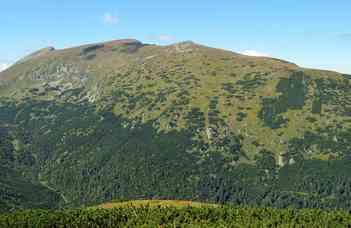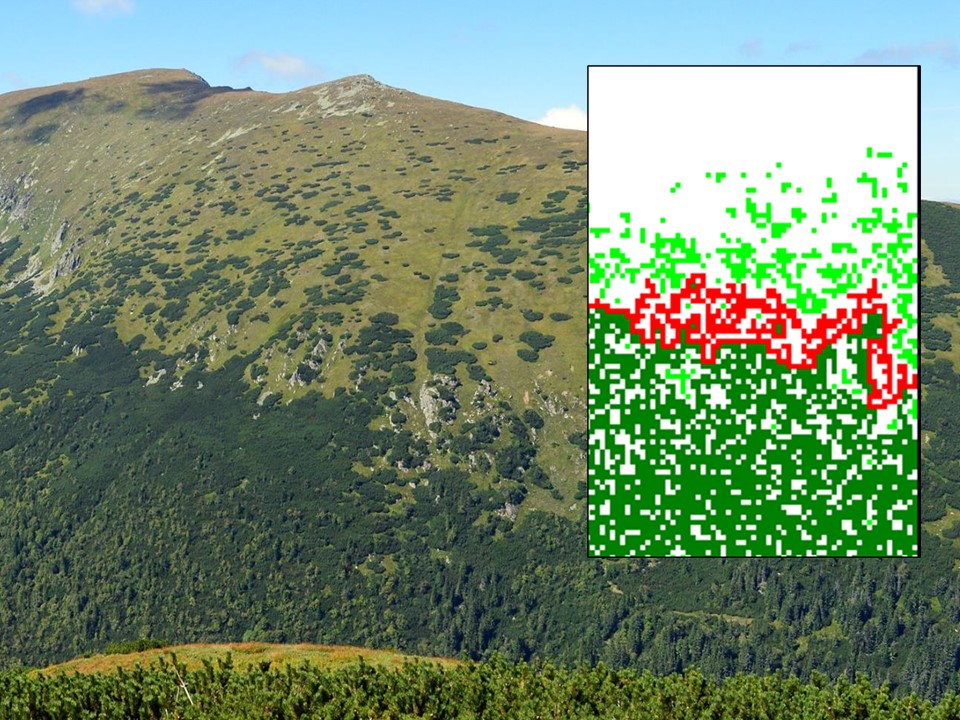Quo vadis? Advancing and retreating fronts of species in a changing climate

Climate change affects different species differently: some experience a contraction in their range, while others are expanding. The emerging species losses can jeopardize the stability of entire ecosystems, while the rapid advancement of invasive species, pests, and pathogens poses serious economic challenges. Whether it is range contraction or expansion, it is crucial to accurately determine the current distribution boundaries, for comparison with future scenarios. This is challenging because the edges of occupied areas often exhibit complex patterns.
Dr. Oborny and her research team propose a new method that allows for more precise delineation of range edges, and more effective detection of shifts. The essence of the new method is not to observe the outer, isolated occurrences of a species, but to focus on the boundary between continuous and fragmented occurrences. The red line in the figure represents this boundary, the hull. The population density is higher, and there is less random fluctuation at the hull than at the outermost edge. The researchers suggest to draw the species' range limit along the midline of the hull, and monitor its movement.

An upper limit of dwarf mountain pine (Pinus mugo) in the Low Tatra mountains, Slovakia, and a snapshot from simulated population dynamics. The red line is the hull. Dark/light green shows the connected/fragmented occurrence of the species. Photo: Konrád Lájer, simulated image: Beáta Oborny
The method was tested through computer simulations under various environmental conditions and with different model species. The studies showed that the hull has a characteristic spatial structure (fractal), which remains consistent in retreating fronts and only distorts in the case of very rapid advances. The latter scenario serves as a warning sign that the species' spreading is not sufficiently fast to keep up with the movement of suitable habitats. Thus, it tends to lose in the "running race" with the habitat.
The goal of the new method is to efficiently monitor changes in the geographic ranges of species and to make different species in various geographical regions comparable. This can facilitate our understanding of species movements on the global scale and can suggest new ideas to support the survival of endangered species, and to control the spread of pests in a changing climate.

